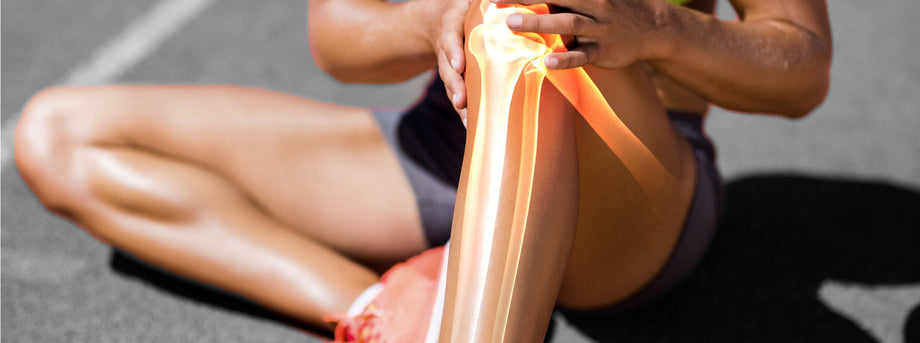
The benefits of staying active are plentiful. They span from physical to mental -- and even emotional. When you experience the unfortunate incident of an injury, it can be frustrating to have to stop activity and halt all the great benefits that come with exercise.
Benefits of Staying Active
A healthier heart. The evidence is overwhelming that physical activity -- especially anaerobic or aerobic exercise -- contributes to a healthier heart. Physical activity has been linked with improved blood pressure, reduced risk of heart disease, reduced risk of stroke, lowering “bad” cholesterol levels, and raising of “good” cholesterol levels. Overall, physical activity is one of the best things you can do for your heart.
A healthier body weight. Physical activity helps burn calories and build muscle mass. Both of those benefits can help you keep your body fat and weight at a healthy level. Combined with a balanced diet, physical activity is an important part of maintaining healthy body weight.

Reduced risk of disease. Regular, consistent physical activity has been linked to a reduced risk of a number of diseases. According to the CDC, physical activity has been shown to reduce risk for heart attack, diabetes, stroke, and some forms of cancer. There’s also been a heavy link shown in studies that exercise eases symptoms of anxiety and depression.
Stronger muscles and bones. The more you move, the more your muscles adapt to do that movement -- spurring muscle growth. Certain exercises -- particularly weight-bearing exercises -- inspire the body to strengthen the bones. Strong muscles and bones mean reduced risk of injury or falls -- and could help prevent bone loss disease like osteoporosis.

How to Stay Active After an Injury
Now -- if you didn’t already -- you understand all the benefits of remaining physically active throughout your life. But what happens with something happens that prevents you from physical activity -- like an injury?
An injury -- as long as it’s not too severe (we don’t want to advocate walking on broken leg, for example) -- doesn’t have to mean the complete halt of physical activity. Your body and mood could suffer more than just the injury if you feel compelled to quit moving all together.
With a little guidance -- always consult your physician before attempting any exercise after an injury -- you can find ways to keep movement in your life, while you heal your injury.
Here’s some tips for physical activity after an injury:
Take proper time to rest. Before you start trying any activity, you have to give your body some time to rest. The more serious the injury, the more time. Also, you will likely need to allow more time in between workouts to rest than before the injury. Be kind to yourself!

Find supervision. Number one -- clear any physical activity with your primary physician first. You don’t want to make anything worse. If you can, working with a physical therapist or personal trainer could be beneficial to getting back to normal. A professional will be able to offer pointers that could speed healing. They also might be able to offer some insight into how you injured yourself in the first place, that you hadn’t considered. The safest way to exercise after an injury is with someone who has expert knowledge and your recovery in mind.
Start slow. It can be super difficult to slow down and relax -- but it’s what your body needs after an injury. Maybe you’re used to long runs and now you can only walk briskly through the neighborhood. Keep in mind -- you’re still moving and will still receive the benefits of physical activity at a slower pace.

Change it up. Cross-training is an effective way to keep fit while a certain part of the body heals. Find exercises that don’t aggravate the injury. Consider gentler activities like walking, yoga, or swimming until you are feeling stronger. Exercising in water is also an excellent way to get a great workout -- without putting too much pressure on the body and joints.
Utilize proper tools. To protect the injured area and speed up healing, you could find it helpful to employ certain tools or products along the way. Compression or support garments can be your best friend until an injured area is feeling stronger. Support will help you feel secure and compression will keep the healing blood flowing to the area -- both during and after exercise.
Use exercises to heal. A physical therapist will be able to help you with this -- but you can also find some exercises on your own. Certain exercises -- like stretching and strength building moves -- can actually help to heal an injury properly.

Listen to your body. Pay close attention to what your body is telling you -- no matter the activity. Injuries are often a result of NOT listening to the body, so it’s critical that you listen closely during the healing process. If anything hurts, stop immediately. If you find yourself tiring out, give yourself permission to slow down. You healing body will thank you. And you’re likely to come back even stronger than ever.
With a little guidance -- and doctor oversight -- an injury doesn’t have to be a permanent sentence to the couch. Finding the right exercise, the right pace, and the right tools will be a journey -- but you can still reap all the benefits that physical activity has to offer.
About Kunto Fitness
To learn more about Kunto Fitness please visit: www.kuntofitness.com.
